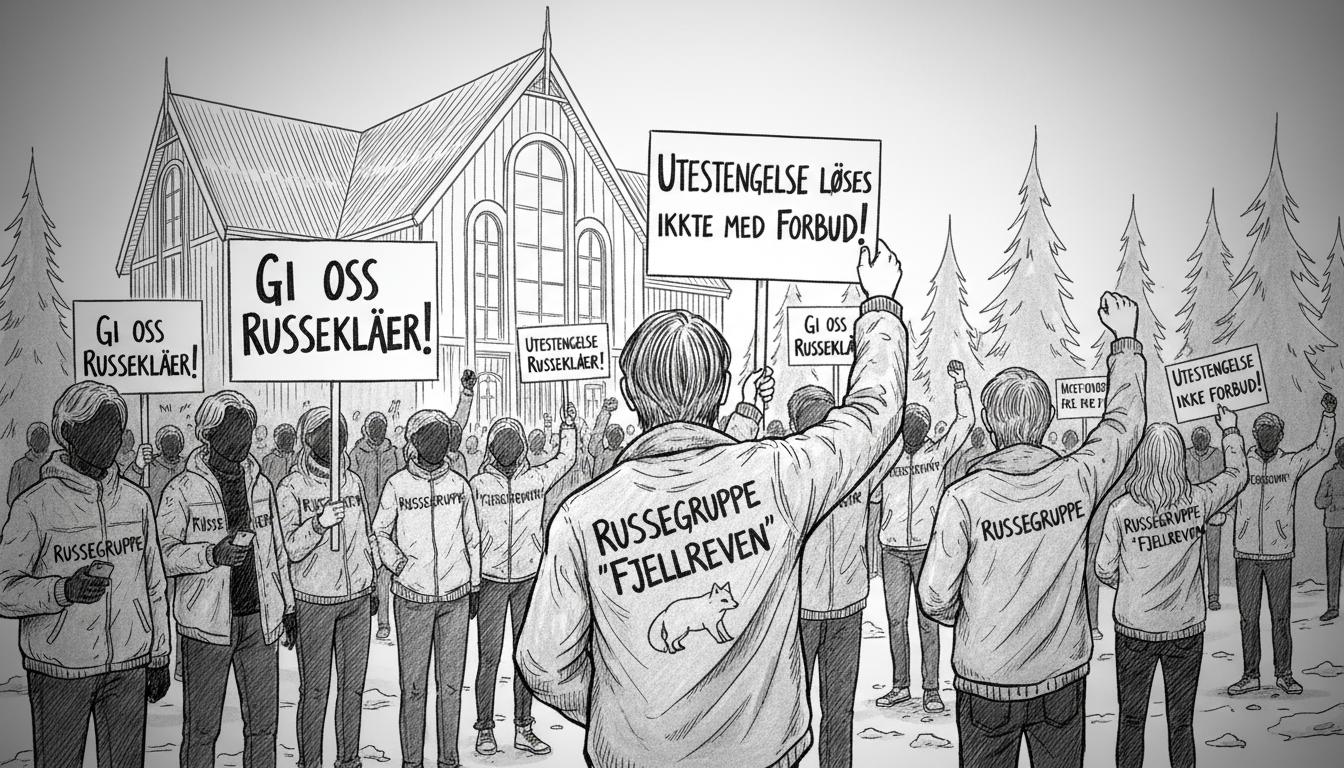Norwegian students protest ban on graduation gear
Norwegian high school students protest a ban on graduation jackets showing group names, arguing it addresses symptoms rather than causes of social exclusion. The students spent thousands on custom clothing now prohibited during school hours and criticize officials for poor communication about the decision.

Students at Porsgrunn High School expressed frustration after their county banned graduation jackets displaying group names. The ban aims to reduce social exclusion during Norway's traditional russ celebration period.
Russ refers to Norwegian high school graduates celebrating their final spring semester with parties, special clothing, and activities. The tradition involves students forming groups often marked by matching outfits.
This week, Telemark County Council prohibited clothing showing russ group affiliations during school hours. Students risk disciplinary action if they wear their group jackets inside school buildings.
Class president Ada Pedersen, 18, said everyone has been discussing the ban all week. The student council unanimously considers the prohibition disappointing.
What will we do during russ time now? The graduation jacket matches the overall outfit perfectly, Pedersen explained.
Vice president Magnus Kildebo, 18, believes graduation clothing has been over-problematized. He compared group names to icebergs where you only see the surface.
Kildebo also noted a misconception that all students want to participate in russ activities. Some choose not to join, but now they face judgment for opting out, he said.
Students argue the ban comes too late since groups form during middle school. They feel the prohibition fails to address root causes of social exclusion.
Much frustration stems from what students call poor communication and collaboration. They learned about the ban through social media and group chats without prior warning.
We wish there had been more communication with us, Pedersen stated. Such drastic decisions shouldn't happen without our knowledge.
Linnea Farstad, 17, expressed shock that the ban affected her school after seeing it impact other graduates. She never expected it would happen to her.
The financial impact is substantial. Bus manager Linus Holtren, 18, revealed their group spent over 100,000 Norwegian kroner (approximately $9,500) on graduation clothing already purchased.
Holtren believes compensation would be appropriate given the lack of dialogue before the ban. When asked what they'll do with the clothing, Kildebo joked they might burn it or give it to people outside the county.
Student presidents from four area schools sent a joint email protesting the decision. Education committee leader Stig Kolbjørnsen confirmed receiving feedback from graduates and others.
Some oppose the decision about exclusionary group effects, while others thank us for addressing the issue, officials stated.
Kolbjørnsen cited surveys showing high exclusion numbers. Clothing marking group affiliation becomes a daily reminder that some students don't belong to the community, he explained.
The education leader emphasized concern about inclusion affects many students' mental health over long periods. School owners must take this seriously, he wrote.
Officials clarified they don't want to eliminate graduation clothing entirely, just items signaling group affiliation. They hope celebrations will focus more on entire classes or year groups rather than smaller clusters.
Despite their objections, Porsgrunn students acknowledge both sides of the issue. Pedersen called the inclusion effort a really good idea, noting it's nice that people try to fix things so others don't suffer at school.
Farstad admitted feeling conflicted when arguing against the ban. You don't want it to affect you personally, but you can still see it's actually a problem, she said.
Students question whether the execution matches the good intentions. Linea Ramsås, 18, noted groups exist regardless of clothing because they represent actual friendships.
The students perceive the decision based on somewhat exaggerated reality. They don't observe major divisions between those wearing graduation gear and those who don't.
Zuheb Musa, 18, the only student council member not in a bus or concept group, doesn't recognize the often-described exclusion. He thinks better solutions exist than prohibition.
Students suggested alternative approaches including theme days, joint parties, graduation shows, and prom. They believe a common jacket for the entire year would work better than no jackets at all.
Kildebo noted Musa's non-group status doesn't matter since he can always borrow clothes from friends. We're still friends with him even though he's not on the bus, he said.
The situation highlights how well-intentioned policies can create unintended consequences when implemented without student input. While addressing social exclusion is crucial, top-down decisions often miss practical realities of school social dynamics.